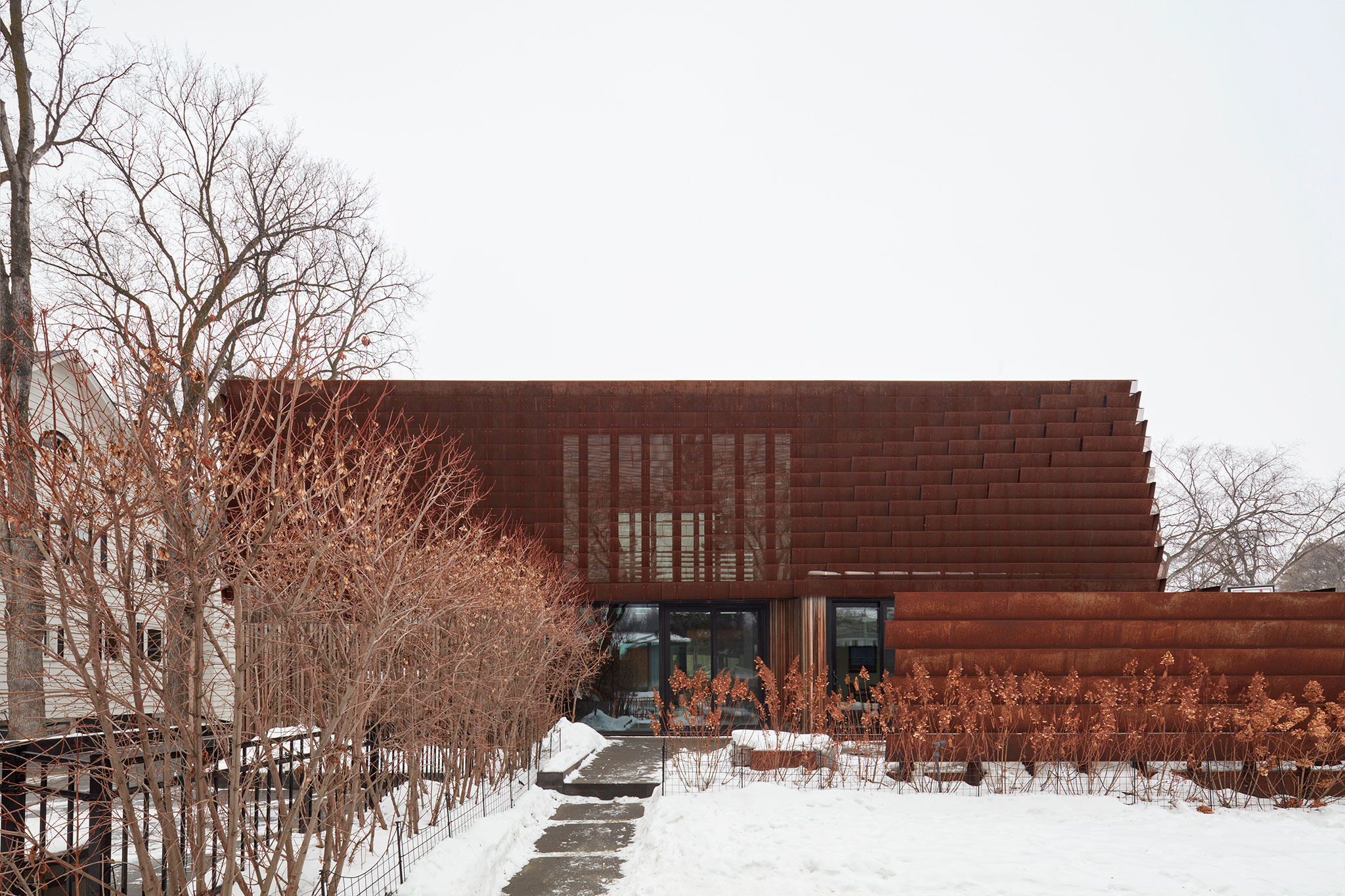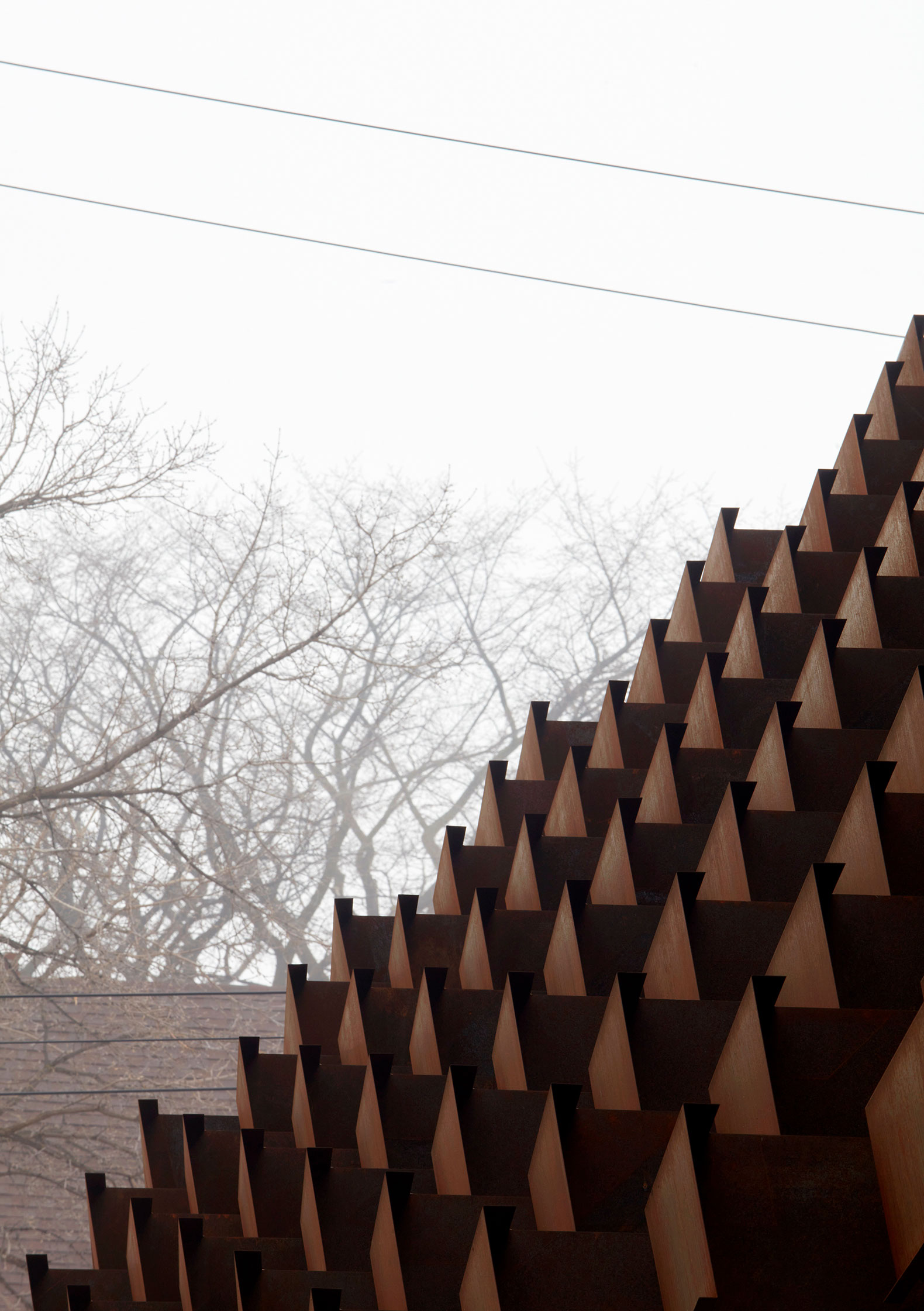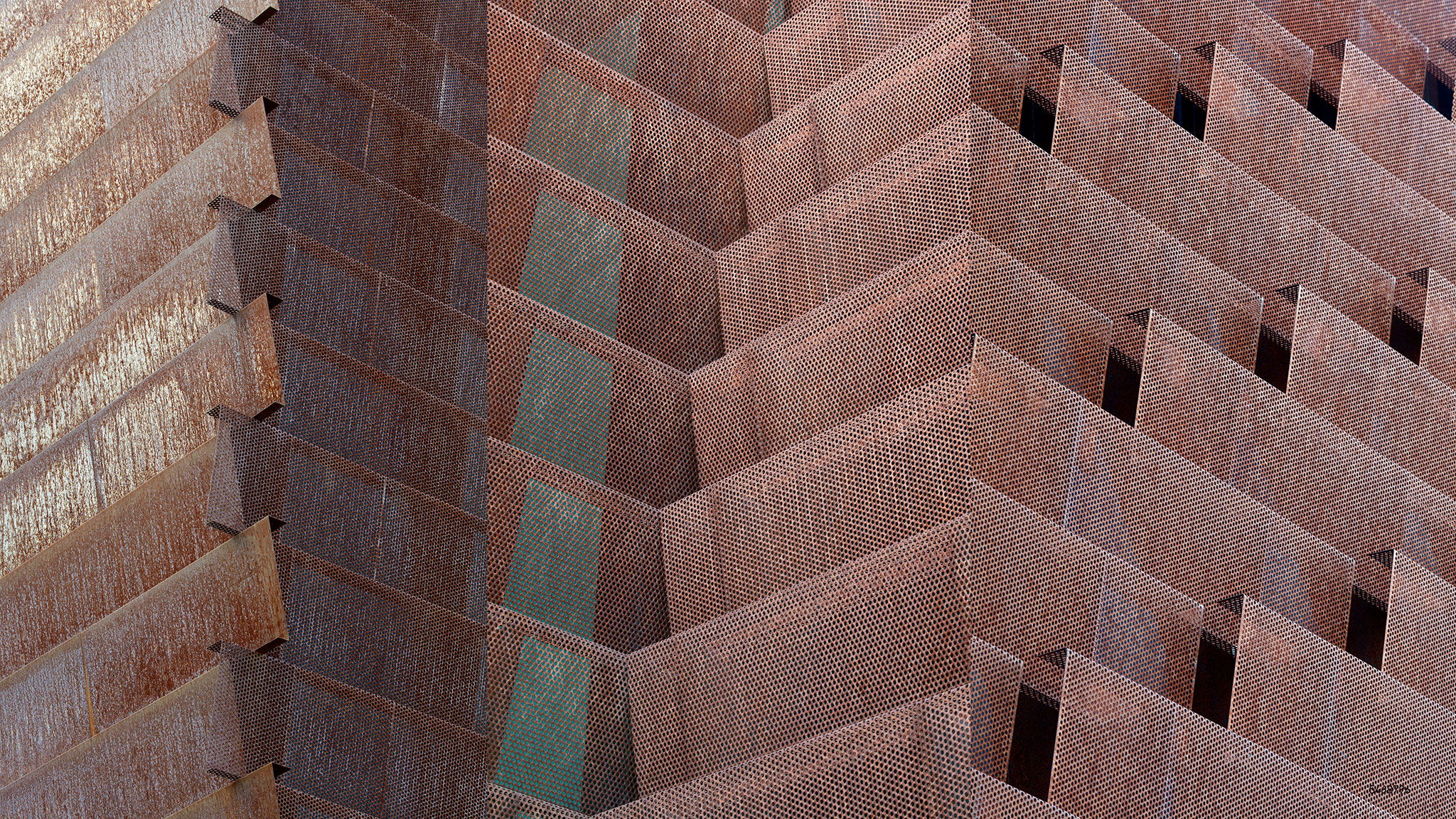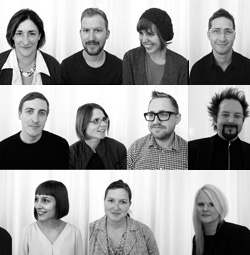The element that distinguishes the building is a veil of worn steel pieces that float delicately over the space, creating interstitial spaces on both floors. It is built through a strategic arrangement of the pieces that open holes for light to hit the windows and balconies, creating a feeling of transparency, privacy, and abstraction from the street, with an industrial aesthetic that has its roots in the manufacturing economy of the city.

Veil House by 5468796 Architecture. Photograph by James Brittain.
Project description by 5468796 Architecture
The project was built to allow a family to age-in-place and enjoy a high degree of both airiness and privacy, balancing open outdoor spaces with articulated interior enclosures. Located in Winnipeg, where early 20th century suburban sprawl has shaped much of the city’s architectural identity, infill projects in mature neighbourhoods are important sites to challenge the status-quo.
Veil House is arranged on a loose nine-square grid organized around a central courtyard. The residence is configured as a series of free-flowing open living spaces, (living, family, dining, kitchen, circulation) framed by solid utility blocks, (washroom, laundry, fireplace, storage, appliances). This interplay eliminates the need for walls and doors.
The unique configuration allows all living spaces to be spatially defined, while also being visually and acoustically connected. Double height spaces, each with their own distinct character – sloped ceilings (kitchen + family room), infinite ceiling (dining room), double volume (living room), and open volume (courtyard) blur the grid in sections and create a private primary bedroom on the upper floor.

Veil House by 5468796 Architecture. Photograph by James Brittain.
The house is situated at grade — rare for a city that receives large amounts of snowfall, and even more rare for houses with basements — and an interior ramp enables universal access across two floors. As it ascends from the main level, the ramp follows the north wall. The otherwise difficult space below is used to bring natural light into the basement, while also providing emergency egress from the bedrooms. Firmly planting the main floor at grade results in a seamless extension of the interior spaces to the courtyard and surrounding yard.
The blocks and ramp are blanketed by a weathered steel "veil". Propped up by the utility blocks, the veil follows the ramp, starting at ground level, spiralling up and peeling off of the wall to enclose the private patio on top of the garage, dappling light on the west and south sides of the house. The veil continues, covering the entrances and ‘re-attaching’ back to the house to complete the spiral. Strategically perforated over windows and balconies, the veil creates a sense of wonder and curiosity from the street, while elegantly filtering daylight into the interiors and allowing exterior views without compromising privacy.

Veil House by 5468796 Architecture. Photograph by James Brittain.
The veil delicately floats in space, tack-welded to the knife edge of cantilevered steel supports, gentling peeling away from the house to create interstitial spaces on both floors. The industrial aesthetic is rooted in the manufacturing economy of the city.
Weathering steel forms a velvet-like patina, a material warmth often reserved for wood, while also giving the house a restrained presence. Its longevity is assured by Winnipeg’s dry and often sunny climate. While the material is foreign to the neighbourhood, the geometry is familiar, reflecting the deep and tall hip roofs of its neo-Gothic and neo-Georgian neighbours.
Veil House functions as both architecture and sculpture, drawing connections between architecture and industry, structure and decoration, retreat, and expression.













































